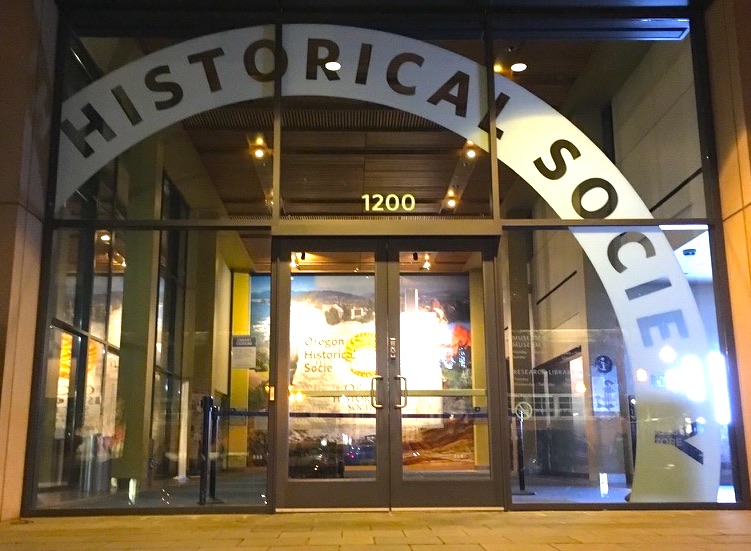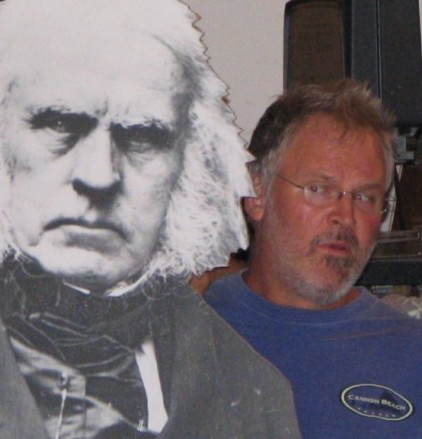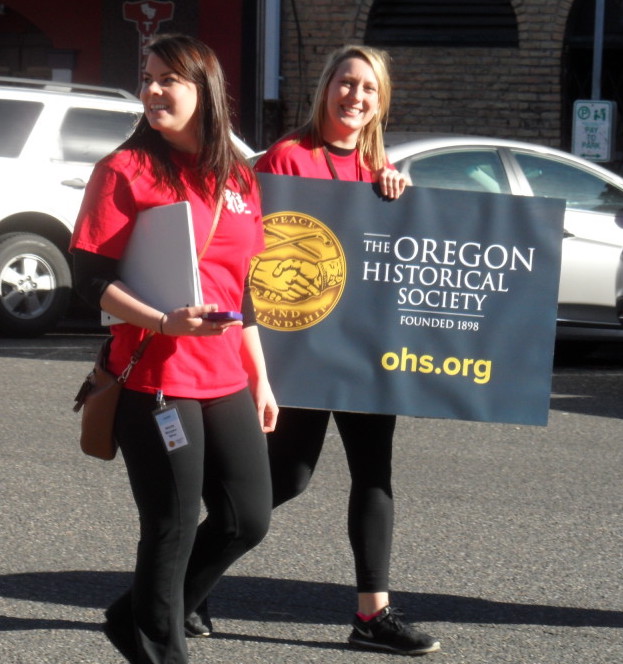
Oregon Historical is the third of a five part series inspired by a twitter post asking to list five jobs.
From mill work, to army medic, a museum job was a perfect fit.
The idea started from three thousand miles away.
During the turbulent 20’s, my twenties, not 2020, I made a few long runs. On the road less traveled, it ran from North Bend Oregon to Philadelphia to Eugene to New York, and finally Portland.
There were a few stops in between, and less than luxury travel, but the miles were the same.
My museum life began like many, with a field trip to a museum. That museum was the Coos County Historical Society.
Back then, grade school years, the museum was in North Bend near the North Bend Bridge. Later I learned that it wasn’t the North Bend Museum, or the North Bend Bridge, but at the time those names fit.
The place was small and packed, like a hoarders garage. I liked the feel of it.
The memory of my first museum visit remains clear: some of the kids used the time to hide from their teacher. Museums have good hiding places.
After rolling up and down the highway enough, I decided where I wanted to be and what I wanted to do. After NYC, I wanted to live in Portland and do something only done in Oregon.
I’d already had one summer of fish packing at Hallmarks in Charleston, Oregon, followed by a summer of green chain and dryer feeding in a Coos Bay mill. Although those jobs are a great Oregon tradition, I wanted something else.
One of my biker pals knew a museum director who was interviewing for the Oregon Historical Society. Oregon history clicked. I started as a museum guard and worked my way into the exhibits department, and finally joined the museum staff as a curatorial assistant, then collections manager.

The professional crew I joined were the ABC guys: Archibald, Brentano, and Cleaver, all mid to late career guys who knew their stuff inside and out. I was the new guy with a future back then, and it was bright. I could also lift things.
The normal career track in the profession was pretty standard: first you’re the new guy all amped up to make important changes. You hit the administrative wall in a couple of years of no-change, followed by disappointment, bitterness, disillusionment.
It’s usually a five year plan for most itinerant museum pros. After the fifth year they move to a new job in a new city and start being dysfunctional all over. They get glowing letters of recommendations from their prior staff to get the ball rolling to the next.
That wasn’t the case with the Oregon historical staff I joined. They were all long-term curators in a museum with a heroic leader supported by department heads who knew how to toe the line he drew.
One of the curators explained leadership: “The more they screw-up, the more we can get done while they’re preoccupied.”
It was a perfect storm that created one of the top regional history museums in the nation. I called it the Oregon Smithsonian.
As a museum collection guy, I went around the state on collection expeditions.
Collecting Oregon Historical Artifacts

I went to Medford and rented a truck and filled it up with wooden pattern parts. The stuff was used to make castings for heavy machinery. Separately, they looked like industrial art, something interesting to hang on a wall.
A lady in Tillamook called to donate her cast iron cookware collection. She lived out of town. When I showed up in the Oregon historical Chevy Suburban, she was distraught. One of her workers had left a gate open and three of her cows escaped.
Along with the museum collection material, I also herded cows back to their field, which is a resume builder few outside of cowboys list. I channeled my inner Lonesome Dove for the cattle drive.
A real estate agent called one day to report a listing that had a long-term owner, and would we like to see if there was anything there to support Oregon historical research.
It was an exciting call. A longtime resident has things other people don’t, especially if they never throw anything away. In real life we buy something in a box and throw the box away. Finding trash from 1920 is different than trash in 2020 because old trash becomes rare over time.
I picked up a key and entered the house. It smelled old and funky, which wasn’t a surprise. What was a surprise was the caution tape covering one inside door. I ignored it and started going through cupboards and kitchen drawers.
After a thorough search to fill gaps in the Oregon historical collections, I was ready to leave. But the door with the tape was too intriguing. I tried the door before I left. It was unlocked, so I opened it.
The bedroom was a charred black, like a fire had been contained in there, but my eyes were drawn to the bed. It had been burned black too, but the reverse silhouette of a body remained.
I choked down a gag when I realized I’d been breathing the lingering aroma of a burned dead person. I left to drop the key off and return to the museum.
Me: Thank you for contacting the Oregon Historical Society. I found many artifacts that will be important to our collections.
Agent: Did everything go okay?
Me: Yes. It was a good find for history.
Agent: I thought it might be.
Me: Thank you again. Here’s my card. Give me a call if you have anything similar show up.
Agent: Will do.
Keeping It Together

The important thing I learned working for the future of Oregon historical interpretation was perspective.
Like events today, we don’t grow by blaming or pointing fingers; we don’t learn by screaming and cursing, even if it feels called for.
We become better people for those around us, our neighbors, loved ones, and passers-by, by projecting calm and competence.
Did the man with the dancing sister in the sawmill post deserve some measure of revenge? Was the flowery drill sergeant in the army medic post suspicious?
Some problems solve themselves, some need a push, and some need to be locked in a burned up room for their jackassery.
Whatever you do, make it calm. Don’t be a trigger for anyone.


